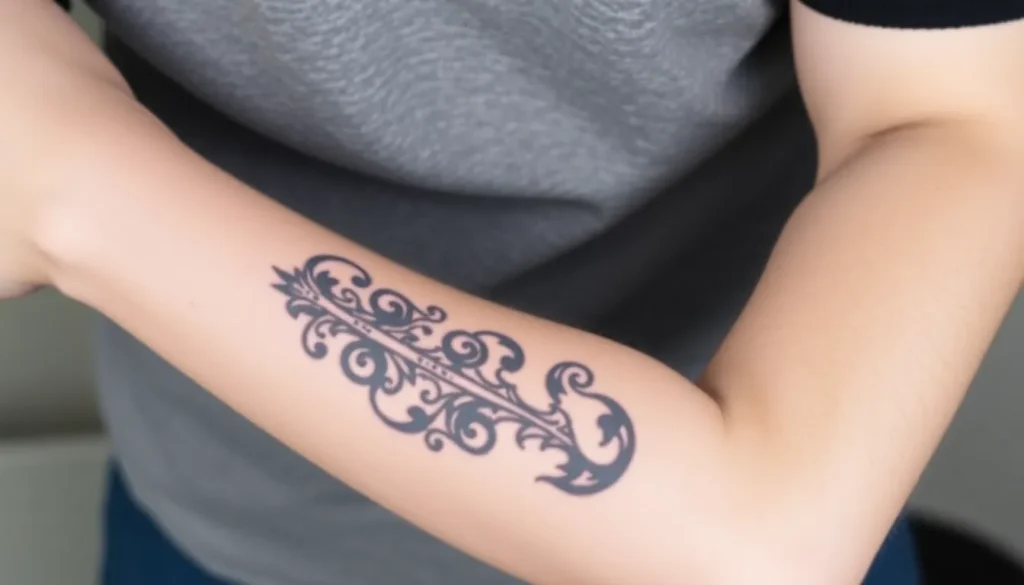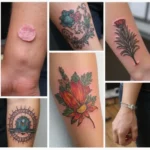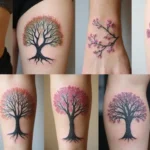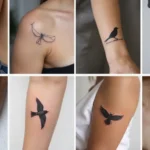Getting a forearm tattoo is one of the most popular choices for both first-timers and seasoned ink enthusiasts. We’ve all wondered about the time commitment involved when planning that perfect piece of art on our arms. The forearm offers an ideal canvas that’s visible yet professional but understanding the timeline helps us prepare mentally and physically for the experience.
Timing varies significantly based on several key factors we’ll explore in detail. A simple text design might take just 30 minutes while an intricate sleeve-style piece could require multiple 4-6 hour sessions. We’ve gathered insights from professional tattoo artists and real client experiences to give you accurate expectations.
Whether you’re planning your first forearm tattoo or adding to your collection we’ll break down everything that influences session length. From design complexity to your pain tolerance and aftercare requirements – we’ll help you plan the perfect tattoo timeline that works for your schedule and vision.
Factors That Determine Forearm Tattoo Duration
Multiple variables influence how long your forearm tattoo session takes, with some factors carrying more weight than others. Understanding these elements helps you plan appropriately and set realistic expectations for your tattoo appointment.
Size and Complexity of the Design
Size directly impacts tattooing duration, with larger pieces requiring exponentially more time than smaller designs. A simple 2-inch forearm tattoo typically takes 30-60 minutes, while a full forearm sleeve can require 8-15 hours across multiple sessions.
Complex designs featuring intricate patterns, geometric shapes, or detailed illustrations add substantial time to each session. Tribal tattoos with extensive line work often take 2-3 times longer than basic text or simple symbols. Realistic portraits demand precise shading techniques that can extend session length by 40-60% compared to traditional tattoo styles.
Multi-element designs combining various imagery require careful planning and execution, often necessitating 3-5 separate appointments. Celtic knots, mandala patterns, and biomechanical designs represent complexity levels that significantly extend tattooing duration beyond basic expectations.
Detail Level and Artistic Style
Fine line tattoos require meticulous precision, with artists working slower to achieve clean, consistent results. Dotwork and stippling techniques can triple the time needed compared to bold traditional styles, as each dot must be individually placed with surgical accuracy.
Watercolor tattoos demand specialized blending techniques that extend session duration by 25-40% beyond standard colored pieces. Blackwork and solid color fills progress faster than detailed shading, with solid sections typically completing 30% quicker than gradient work.
Photorealistic tattoos represent the most time-intensive style, often requiring 6-10 hours for medium-sized forearm pieces. Abstract designs with flowing elements and organic shapes take longer than geometric patterns with defined boundaries.
Artist Experience and Speed
Experienced tattoo artists typically work 20-30% faster than newer practitioners while maintaining superior quality standards. Master tattooists often complete complex forearm pieces in fewer sessions due to their efficient techniques and steady hand control.
Specialized artists focusing on exact styles work more quickly within their expertise areas. Portrait specialists complete realistic faces faster than general artists, while traditional tattooists excel at bold line work and solid color application.
Apprentice tattoo artists require additional time for complex pieces, often extending session duration by 40-60% compared to established professionals. But, they frequently offer reduced rates that offset the additional time investment.
Your Pain Tolerance and Breaks Needed
Pain tolerance varies significantly between individuals, with some clients requiring frequent breaks during forearm tattooing sessions. Areas near the elbow and wrist bones typically cause more discomfort, potentially extending session duration by 15-25%.
Break frequency affects overall completion time, with sensitive clients needing 5-10 minute rest periods every 30-45 minutes. Athletes and individuals with higher pain thresholds often complete sessions 20-30% faster than average clients.
Time of day influences pain perception, with morning appointments typically proceeding faster than evening sessions when fatigue increases sensitivity. Proper hydration and nutrition before appointments can reduce break frequency and maintain consistent progress throughout longer sessions.
Typical Time Ranges for Different Forearm Tattoo Sizes
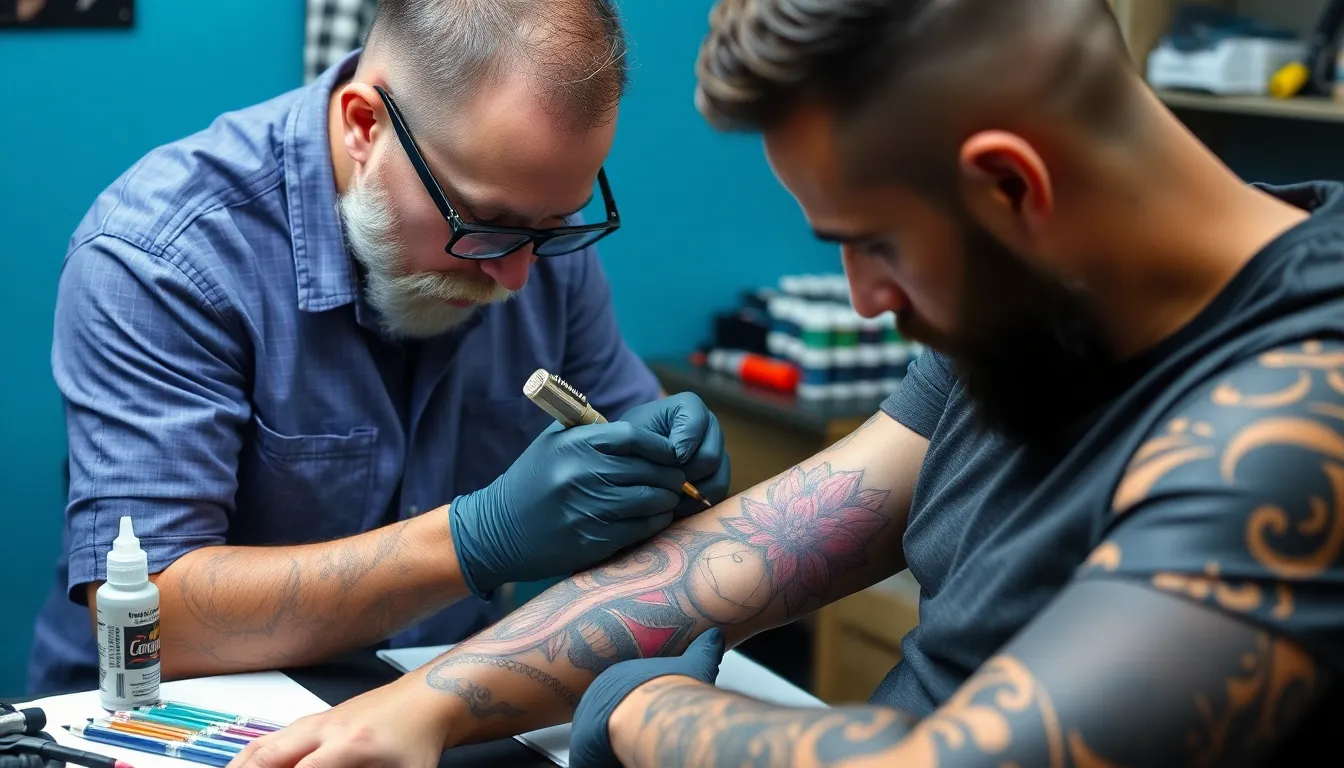
Forearm tattoo duration varies significantly based on the physical dimensions of your chosen design. Professional tattoo artists categorize forearm pieces into three primary size ranges, each requiring different time commitments and planning approaches.
Small Forearm Tattoos (2-4 inches)
Small forearm tattoos typically take 1-3 hours to complete in a single session. Simple designs like text, small symbols, or basic geometric patterns finish within 30-90 minutes. Detailed small pieces featuring intricate linework or shading extend completion time to 2-3 hours.
Artists complete most 2-4 inch forearm tattoos during one appointment without scheduling return visits. Black ink designs process faster than colorwork, with single-color pieces averaging 1-2 hours. Complex small designs incorporating multiple colors or fine details may require up to 3 hours of continuous work.
Examples of common small forearm tattoos include minimalist script, compass designs, small portraits, or simple floral motifs.
Medium Forearm Tattoos (4-8 inches)
Medium forearm tattoos require 3-6 hours of total work, often split across 1-2 sessions. Designs spanning 4-6 inches typically complete within 3-4 hours in one sitting. Larger 6-8 inch pieces frequently require two separate appointments totaling 5-6 hours.
Artists recommend breaking medium tattoos into multiple sessions when designs include extensive shading, color gradients, or photorealistic elements. Single session completion works best for bold traditional designs or simple illustrative pieces. Complex medium tattoos featuring detailed backgrounds or multiple subjects benefit from 2-3 hour sessions spaced 2-4 weeks apart.
Popular medium forearm designs include portrait work, detailed animals, ornate mandalas, or traditional sleeve starters.
Large Full Forearm Pieces
Large forearm tattoos covering 8+ inches require 6-15 hours across multiple sessions. Full forearm sleeves typically demand 8-12 hours of total work distributed over 2-4 appointments. Wraparound designs extending from wrist to elbow average 10-15 hours depending on detail complexity.
Artists schedule large forearm pieces in 3-5 hour sessions to maintain quality and client comfort. Initial outline sessions last 2-3 hours, while subsequent shading and color sessions extend 4-5 hours each. Complete sleeve designs often require 3-4 separate appointments spaced 3-6 weeks apart for proper healing.
| Forearm Tattoo Size | Session Duration | Total Time Required | Typical Sessions |
|---|---|---|---|
| Small (2-4 inches) | 1-3 hours | 1-3 hours | 1 session |
| Medium (4-8 inches) | 3-4 hours each | 3-6 hours | 1-2 sessions |
| Large (8+ inches) | 3-5 hours each | 6-15 hours | 2-4 sessions |
Complex realistic pieces, Japanese traditional sleeves, or biomechanical designs represent the most time-intensive large forearm options requiring maximum session commitments.
What to Expect During Your Tattoo Session
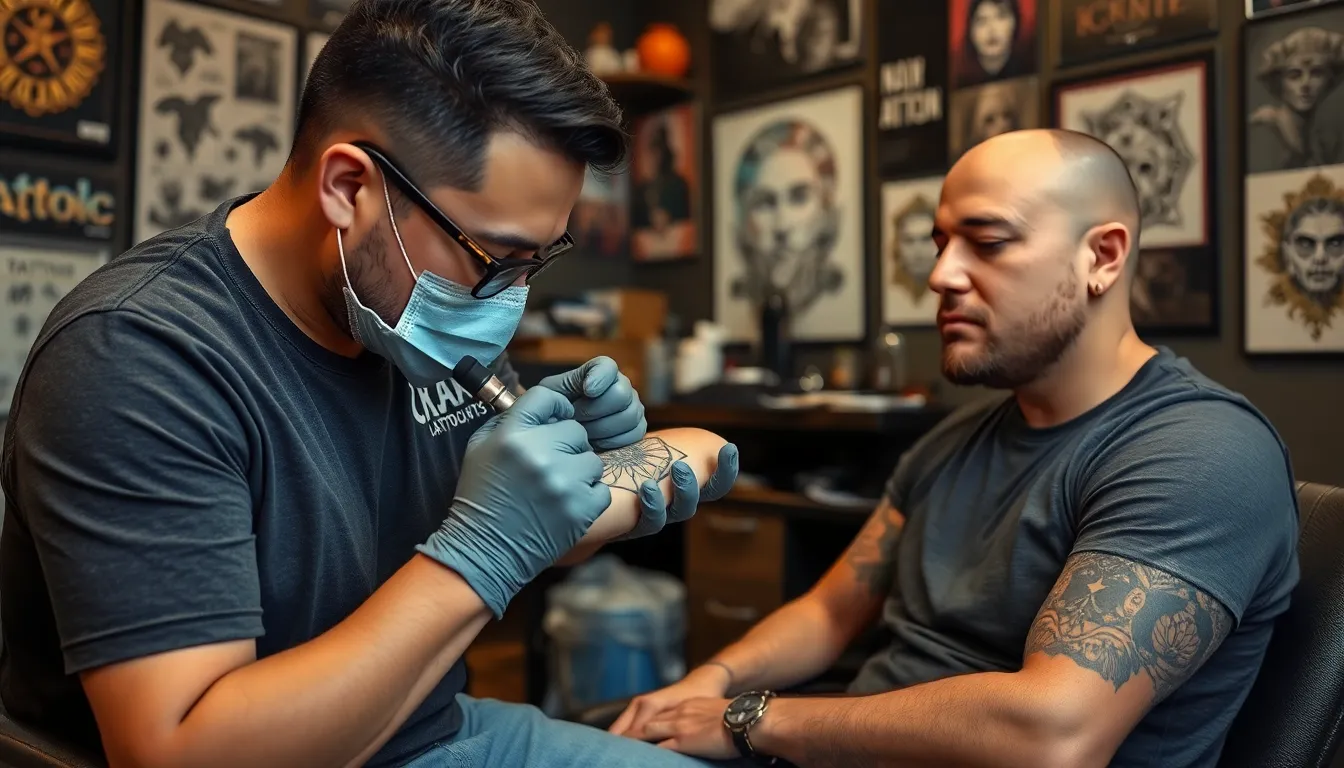
Your forearm tattoo session involves distinct phases that directly impact the overall duration. Artists structure each session to ensure optimal results while maintaining client comfort throughout the process.
Preparation and Stencil Placement
The initial setup consumes 15-30 minutes before any tattooing begins. Artists cleanse the forearm area with antiseptic answers and shave any hair to create a smooth surface. Stencil application follows exact positioning requirements based on your arm’s natural contours.
Multiple stencil adjustments often occur during this phase if the design placement doesn’t align with your expectations. Artists may reapply stencils 2-3 times to achieve perfect positioning on curved forearm surfaces. Simple geometric designs require minimal adjustments while organic flowing patterns demand more precise placement considerations.
Photography documentation captures the approved stencil position for reference throughout longer sessions. This preparation time extends for larger pieces covering 6+ inches of forearm space.
The Tattooing Process
Line work initiation marks the beginning of actual tattooing time. Artists complete outlines first using single needle configurations or small groupings depending on design specifications. Fine line tattoos progress at 1-2 inches per hour while bold traditional outlines advance at 3-4 inches hourly.
Shading phases consume significantly more time than initial line work. Black and grey shading typically requires 45-90 minutes per square inch for photorealistic details. Color application adds another 30-60 minutes per square inch depending on saturation levels and blending requirements.
Break intervals occur every 60-90 minutes during extended sessions lasting over 3 hours. These 10-15 minute pauses prevent client fatigue and maintain artist precision throughout complex forearm pieces. Pain management becomes crucial during sensitive inner forearm areas near the wrist and elbow.
Touch-ups and Final Details
Detail refinement occupies the final 30-45 minutes of most forearm sessions. Artists inspect line consistency and adjust any areas requiring enhancement or correction. Highlight additions and final color adjustments occur during this phase.
Cleanup procedures remove excess ink and blood while revealing the completed tattoo appearance. Artists apply protective film or bandaging materials following exact aftercare protocols. Documentation through final photography captures the fresh tattoo state for portfolio and healing comparison purposes.
Second session scheduling discussions happen immediately if the design requires additional work beyond the current appointment capacity. Complex forearm sleeves typically require 2-4 sessions spaced 4-6 weeks apart for proper healing between appointments.
Tips to Minimize Your Tattoo Session Time
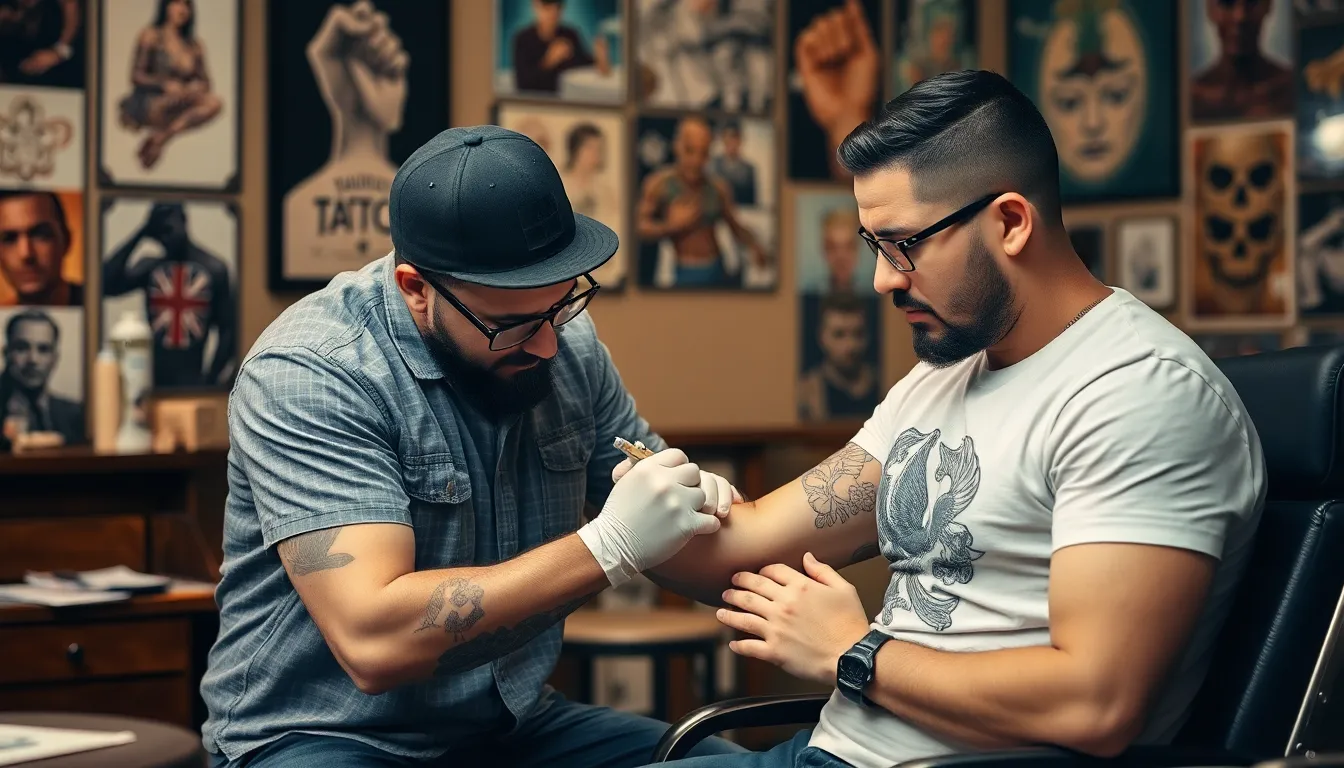
Reducing forearm tattoo session duration requires strategic preparation and smart decision-making. These proven methods can significantly streamline your tattoo experience while maintaining quality results.
Come Well-Rested and Fed
Physical preparation directly impacts your endurance during tattooing sessions. Getting 7-8 hours of sleep the night before ensures your body handles pain more effectively and reduces the need for frequent breaks. Eating a substantial meal 1-2 hours before your appointment stabilizes blood sugar levels and prevents dizziness or fatigue.
Hydrating with 16-20 ounces of water throughout the day maintains optimal skin condition for tattooing. Avoiding alcohol for 24 hours before your session prevents blood thinning that complicates the tattooing process. Taking these steps reduces session interruptions and allows artists to work continuously for longer periods.
Choose an Experienced Artist
Skilled tattoo artists complete forearm pieces 25-40% faster than apprentices or less experienced professionals. Experienced artists develop efficient techniques through years of practice, reducing time spent on line work and shading. They also make fewer mistakes that require correction, eliminating time-consuming touch-ups during the session.
Researching artists who specialize in your desired style ensures optimal efficiency. Artists familiar with exact techniques like fine line work or photorealism complete these complex styles more quickly. Booking with established professionals might cost 15-30% more but typically saves 1-3 hours on medium to large forearm tattoos.
Finalize Your Design in Advance
Design approval before your appointment eliminates lengthy consultation periods during tattooing sessions. Bringing reference images, measurements, and placement preferences allows artists to prepare stencils ahead of time. This preparation reduces setup time from 30 minutes to just 10-15 minutes on session day.
Confirming design elements like color choices, sizing, and exact details prevents mid-session modifications that extend completion time. Making design changes during tattooing can add 30-60 minutes to your session as artists adjust stencils and recalibrate their approach. Clear communication about your vision during initial consultations streamlines the entire process.
Multiple Sessions vs Single Session Tattoos
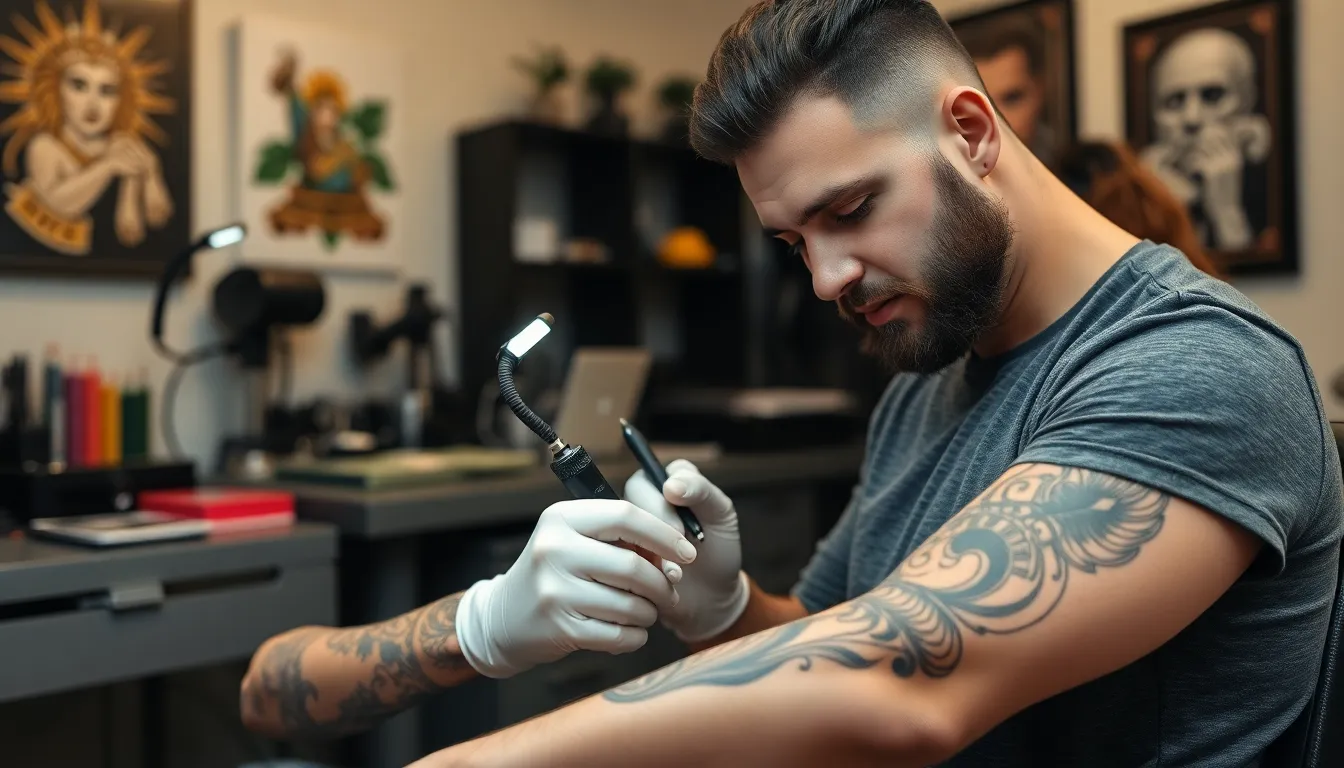
Forearm tattoos fall into two distinct categories based on completion approach: single session pieces and multiple session works. Single session tattoos typically measure under 6 inches and feature simple to moderate complexity designs that finish within 1-4 hours. Multiple session tattoos cover larger pieces exceeding 6 inches or intricate designs requiring extended artistic attention across several appointments.
Single Session Benefits:
- Complete the entire tattoo in one appointment
- Maintain consistent artistic flow and color matching
- Reduce total healing time to 2-3 weeks
- Eliminate scheduling complications for follow-up sessions
- Cost less due to consolidated appointment fees
Multiple Session Advantages:
- Allow proper healing between detailed work phases
- Reduce physical fatigue and pain accumulation
- Enable design modifications based on initial results
- Spread financial investment across several months
- Accommodate complex shading and color blending techniques
Artists typically recommend single sessions for designs under 4 inches with minimal detail work. These pieces complete efficiently within 1-3 hours while maintaining quality standards. Geometric patterns, simple text, and basic linework designs perform best in single appointments.
Multiple sessions become necessary for full forearm sleeves, photorealistic portraits, and intricate mandala designs. These complex pieces require 6-15 hours of total work time distributed across 2-4 appointments spaced 4-6 weeks apart. Each session focuses on exact elements like outline work during the first appointment, shading in the second, and color details in subsequent visits.
Pain tolerance significantly influences session structure decisions. Clients with high pain thresholds often complete medium-sized tattoos in single 4-6 hour sessions. Those with lower pain tolerance benefit from splitting identical designs across 2-3 shorter appointments lasting 2-3 hours each.
Healing considerations also determine session planning approaches. Fresh tattoo areas require 2-3 weeks of complete healing before artists can work on adjacent sections. This biological limitation prevents completing large connected designs in single sessions regardless of client endurance levels.
Session Structure Comparison:
| Approach | Design Size | Time Per Session | Total Sessions | Healing Period |
|---|---|---|---|---|
| Single Session | 2-6 inches | 1-4 hours | 1 | 2-3 weeks |
| Multiple Sessions | 6+ inches | 2-6 hours | 2-4 | 6-12 weeks |
Professional artists evaluate design complexity, client pain tolerance, and anatomical considerations when recommending session approaches. We’ve observed that rushing large pieces into single sessions often compromises artistic quality and client comfort levels.
Conclusion
Getting a forearm tattoo is a rewarding journey that requires proper planning and realistic expectations. We’ve covered the essential timing factors that’ll help you prepare for your tattoo appointment and make informed decisions about your design.
Remember that quality artwork takes time and rushing the process often leads to disappointing results. Whether you’re considering a small piece or a full sleeve we recommend discussing timing expectations with your chosen artist during the consultation phase.
The investment in time for your forearm tattoo will pay off with a beautiful piece of art you’ll cherish for years to come. Take your time choose an experienced artist and prioritize both the quality of work and your comfort throughout the process.
Frequently Asked Questions
How long does a forearm tattoo take?
The duration varies significantly based on design complexity and size. Simple 2-inch tattoos take 30-60 minutes, while medium designs (4-8 inches) require 3-6 hours. Large forearm pieces or full sleeves need 6-15 hours across multiple sessions. Small tattoos typically complete in 1-3 hours, but intricate details or photorealistic elements can extend the timeline considerably.
What factors affect forearm tattoo session length?
Several key factors influence duration: design size and complexity, level of detail, artistic style (fine line work takes longer), artist experience level, and individual pain tolerance. Larger tattoos with intricate shading or photorealistic elements require significantly more time. Additionally, the need for breaks during longer sessions and healing considerations can extend the overall timeline.
Can a forearm tattoo be completed in one session?
Yes, smaller forearm tattoos under 6 inches can typically be completed in a single 1-4 hour session. However, larger or more complex designs require multiple sessions spanning 6-15 hours total. Single sessions work best for simpler designs, while complex pieces benefit from multiple appointments to ensure proper healing and artistic quality.
How should I prepare to minimize tattoo session time?
Come well-rested and fed to enhance endurance, stay hydrated, and avoid alcohol before your appointment. Choose an experienced artist who works efficiently and makes fewer mistakes. Finalize your design in advance to eliminate lengthy consultations during the session. These preparations help streamline the process while maintaining quality results.
What happens during a typical forearm tattoo session?
Sessions begin with 15-30 minutes of preparation and stencil placement. The tattooing process starts with line work, followed by more time-consuming shading. Breaks occur every 60-90 minutes during longer sessions. Touch-ups and final details take an additional 30-45 minutes, followed by cleanup and aftercare instructions. Complex designs may require scheduling additional sessions.
Should I choose single or multiple sessions for my forearm tattoo?
Single sessions work best for tattoos under 6 inches and simpler designs, offering consistent artistic flow and reduced healing time. Multiple sessions are necessary for larger or intricate pieces, allowing proper healing between appointments and opportunity for design modifications. Your artist will recommend the best approach based on your design’s complexity and your pain tolerance.

